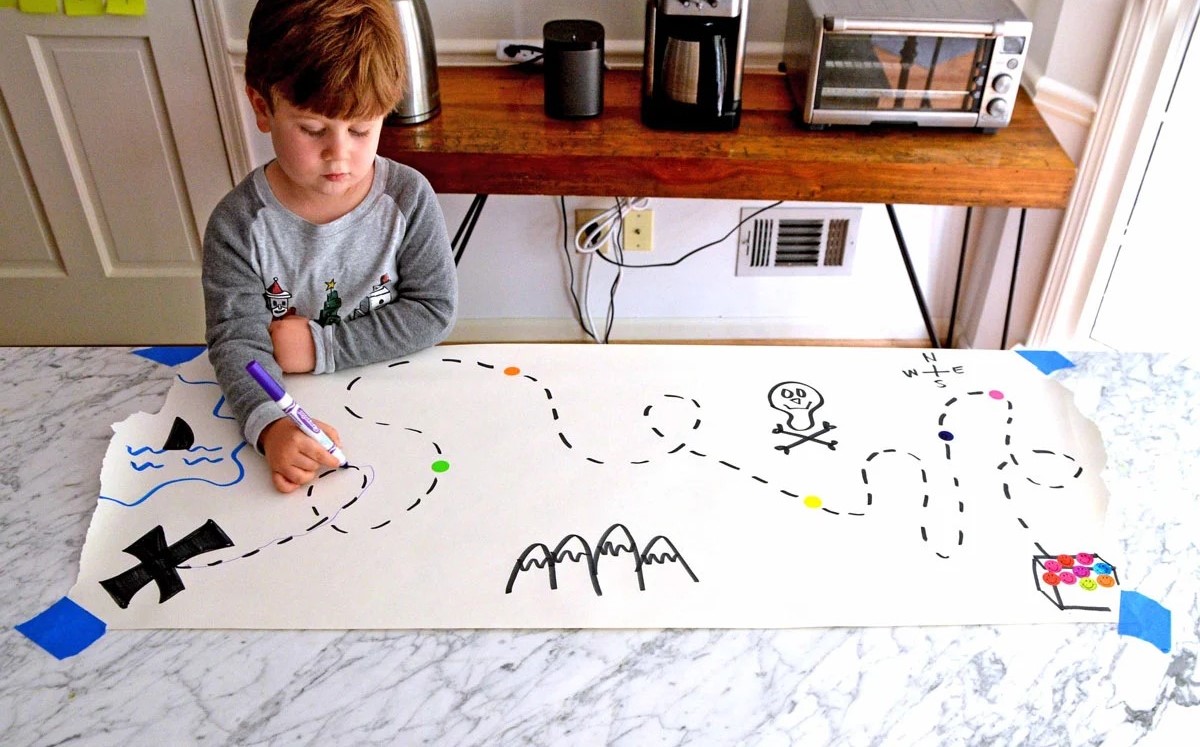
Have you ever been fascinated by stories of hidden treasures and the adventurous quest to uncover them? If so, you’re not alone! Treasure hunting has captivated imaginations for centuries, with maps playing a crucial role in leading explorers to the coveted loot. But have you ever wondered about the art and science behind treasure map making? In this article, we will delve into the intriguing world of treasure map creation and uncover some surprising facts that will leave you astounded. From ancient civilizations to modern-day pirates, the techniques and secrets of map making have evolved through time. So, get ready to set sail on a knowledge-packed journey as we unveil 16 astonishing facts about treasure map making!
Key Takeaways:
- Treasure maps have been used for centuries by explorers and pirates to find hidden treasures, and they often contain cryptic symbols to keep the locations secret.
- The iconic X on treasure maps symbolizes the location of the treasure, and modern technology has revolutionized treasure hunting with satellite imagery and GPS tools.
Treasure maps have been around for centuries.
Since ancient times, people have been creating maps to guide them to hidden treasures. The art of treasure map making dates back to the early explorers and pirates.
Treasure maps were often filled with cryptic symbols.
In order to keep the treasure locations a secret, map makers would use a variety of symbols and codes on their maps. These symbols would only make sense to those who possessed the key.
Pirates were notorious for creating treasure maps.
During the golden age of piracy, pirates relied heavily on treasure maps to mark the location of their buried treasures. These maps were often drawn with great detail, leading to endless adventures for treasure hunters throughout history.
Maps were sometimes designed to deceive.
In order to throw off competitors and thieves, some treasure maps were intentionally misleading. False landmarks and decoy paths were added to confuse anyone attempting to follow the map.
The X marks the spot.
In the world of treasure maps, the iconic X symbolizes the location of the treasure. This symbol has been popularized in movies, books, and folklore, becoming a universal symbol for hidden riches.
Many treasure maps were hidden within other objects.
Treasure maps were often concealed within everyday objects such as books, paintings, or even a message in a bottle. This added an element of mystery and adventure to the hunt for treasure.
There are different types of treasure maps.
Some treasure maps are hand-drawn, while others are printed. Some are even created using advanced cartography techniques. The style of the map often depends on the time period and the person who created it.
X marks the starting point.
In some cases, the X on a treasure map does not show the exact location of the treasure but rather marks the starting point of the treasure hunt. From there, adventurers must unravel the clues and follow a trail to eventually reach the hidden treasure.
Some treasure maps have never been found.
Throughout history, there have been numerous tales of lost or undiscovered treasure maps. These maps hold the promise of untold wealth and continue to capture the imagination of treasure hunters worldwide.
Wild goose chase.
Not all treasure maps lead to actual treasures. Some maps were created as pranks or to mislead individuals into fruitless searches. These maps often result in wild goose chases, leaving treasure seekers empty-handed.
Cartographers played a crucial role in map making.
Skilled cartographers were responsible for accurately depicting coastlines, landmarks, and navigational information on treasure maps. Their expertise ensured that the maps were reliable and provided accurate directions to hidden treasures.
There are modern-day treasure hunts based on maps.
In recent years, treasure hunts have become popular activities, with people organizing real-life adventures based on treasure maps. These modern treasure hunts often involve solving riddles and clues to locate hidden treasures.
Technology has revolutionized treasure hunting.
With the advancements in satellite imagery and GPS technology, treasure hunting has been taken to a whole new level. Modern-day treasure hunters can utilize digital mapping tools to enhance their chances of finding hidden treasures.
The art of treasure map making is still alive.
Despite the advent of digital technology, there are still individuals who are passionate about creating hand-drawn treasure maps. These intricate and artistic maps continue to capture the imagination of treasure hunters and collectors.
Treasure maps have inspired countless stories and legends.
The allure of hidden treasures and the adventure of following a treasure map have inspired numerous tales and legends. From classic novels like Robert Louis Stevenson’s “Treasure Island” to modern-day movies like “National Treasure,” treasure maps continue to captivate audiences worldwide.
Treasure maps hold both historical and cultural significance.
Treasure maps not only represent adventure and wealth but also hold historical and cultural significance. They provide insights into the explorations of the past, the lives of pirates and adventurers, and the human fascination with hidden treasures.
Conclusion
In conclusion, treasure map making is a fascinating art that combines creativity and historical knowledge. The process of creating a treasure map involves careful planning, attention to detail, and an understanding of cartography. From the use of various symbols and techniques to the incorporation of hidden clues, treasure map making is an intricate craft that continues to captivate both artists and enthusiasts alike. Whether it’s for a fun treasure hunt with friends or a piece of fictional storytelling, the allure of treasure maps never seems to fade. So, the next time you come across a treasure map, take a moment to appreciate the skill and artistry that went into its creation.
FAQs
1. How were treasure maps made in the past?
In the past, treasure maps were typically hand-drawn on parchment or paper. They would often feature intricate details and symbols to indicate landmarks, obstacles, and hidden treasures. These maps were often made to look aged and weathered to add to the mystery and authenticity.
2. Are treasure maps still used today?
While the use of physical treasure maps may have diminished in today’s digital age, they are still popular in fiction and as a form of entertainment. Many treasure hunting enthusiasts also create their own maps for fun treasure hunts or as collectible items.
3. What are some common symbols used on treasure maps?
Common symbols found on treasure maps include crossed palm trees to indicate an island, X marks the spot to mark the location of the treasure, compass roses to show direction, and dotted lines to represent paths or routes.
4. Can anyone make a treasure map?
Absolutely! Anyone with a bit of creativity and imagination can try their hand at making a treasure map. Whether for a child’s birthday party or to add an element of adventure to your next gathering, creating a treasure map can be a fun and engaging activity for all ages.
5. Are there any famous treasure maps that have been discovered?
There have been several famous treasure maps discovered throughout history, such as the mysterious Oak Island treasure map and the legend of Captain Kidd’s buried treasure. These maps have sparked the imaginations of treasure hunters and adventurers for generations.
Treasure maps have captivated imaginations for centuries, but there's more to discover in the world of exploration and discovery. Delve into the fascinating history of cartography and uncover surprising facts about this ancient art. Sharpen your navigation skills with unbelievable tales of orienteering and map reading. Finally, embark on an adventure alongside legendary explorer Tom Crean, whose incredible feats will leave you inspired.
Was this page helpful?
Our commitment to delivering trustworthy and engaging content is at the heart of what we do. Each fact on our site is contributed by real users like you, bringing a wealth of diverse insights and information. To ensure the highest standards of accuracy and reliability, our dedicated editors meticulously review each submission. This process guarantees that the facts we share are not only fascinating but also credible. Trust in our commitment to quality and authenticity as you explore and learn with us.


